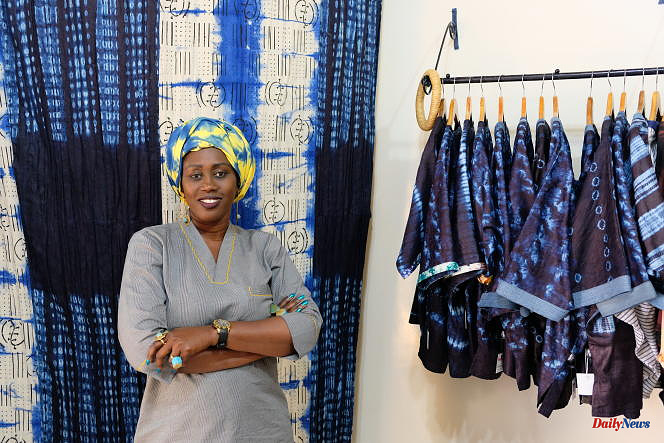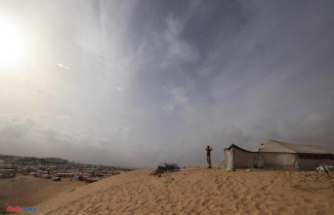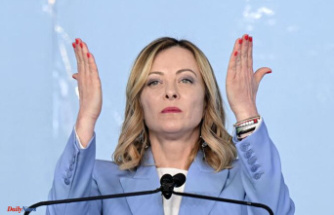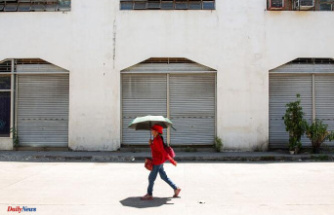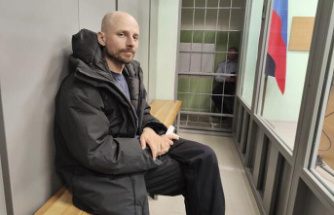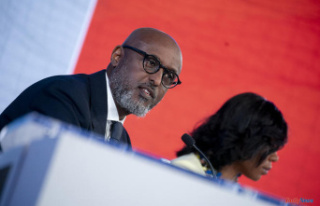Pink, yellow, mauve and orange. In the small shop of Marie Madeleine Diouf, in an alley of the Plateau, in downtown Dakar, the clothes on the large rack come in all the colors of the rainbow. However, as soon as the eye pauses a little on this chromatic explosion, one shade takes precedence over all the others. At the stylist, blue is king: it is the flagship color of the NuNu Design by DK brand, associated with a distant memory, a founder for the milliner. "As a child, the neighborhood I lived in lived to the rhythm of dance performances. Me, I was fascinated by this art and even more by the indigo loincloth of Serer dancers, "recalls the designer.
After the Wolof and the Fulani, the Serer make up the third ethnic group in Senegal, located in the center west of the country. This people, among the oldest to have settled in the area, had a strict dress code which required women to wear a loincloth and an indigo blue boubou with black stripes, and a scarf tied on the head, the foamer. This is why the Senegalese has remained attached to indigo, which for her "is part of the history of the continent, a color deeply linked to several traditional cultures".
Attached to her Serer roots, she therefore naturally declines this shade on bazin, a damask and shiny fabric, as on lépi, a woven cotton loincloth from Guinea. The intensity of the vegetable dye, obtained from the bark of the indigo tree, allows him to nuance the tones to infinity, from deep blue to a very pale bluishness, depending on the patterns made on the fabric. A dazzle for Marie Madeleine Diouf, who likes to play on these tone-on-tone modulations.
Three collections per year
The one around her nicknamed "Nunu" worked for fifteen years as a medical assistant before daring to embark on creation. She took the plunge one day in 2015 by deciding to market the clothes she had been designing at home for three years. The designer starts with 60,000 CFA francs (91 euros) in her pocket and three months are enough for her shop to be full. "It's the stars," she says, modestly, to explain this dazzling success.
However, when she recalls her first shop windows, which mixed shells, fishing nets and typical objects from her village, Fadiouth, in the Siné Saloum region (west) with her fabrics, she smiles: "I really felt launched without knowing where I was going, just to respond to my passion, my desire to create. »
Eight years later, the NuNu Design by DK brand employs ten people. Through her pieces, Marie Madeleine Diouf wants to "magnify African textiles and tell the story of people's experiences". Wrap dresses, short tunics and kimono-type jackets: everything is made in the workshop adjoining the store at the rate of three collections a year. An "authentic and committed" style, in his words, which wants to combine ancestral know-how with current cuts. "We must modernize our heritage, she repeats tirelessly, so that the garment is practical and comfortable on a daily basis. »
NuNu Design's flagship model combines cut-out pockets on jeans salvaged from a Dakar thrift store with an indigo dress or tunic. This creation, the brand's best-selling, reflects the stylist's ecological commitment, in search of a second life for the mountains of second-hand clothes sent by the countries of the North.
Cactus and eucalyptus
Imaginative, she also revisits thiouraye, an incense with heady notes widely used by Senegalese as an element of seduction, and transforms it into a range of liquid room fragrances. And since the designer never forgets that her inspiration stems from her personal story, she named each of the seven fragrances she imagined with the first name of her ancestors.
To give back some of what she has received from her family, Marie Madeleine Diouf has also been organizing workshops since 2019, in order to "contribute to the empowerment of women in crafts". And, regularly, she stops in villages to pass on her knowledge.
To go further, she has also been researching other dyes for the past four years. In the vats of her workshop in Ngaring, 60 km southeast of Dakar, she is experimenting with new processes based on natural components. Pigments from cactus, eucalyptus and various barks allow it to obtain unique colors, different from modern dyes.
In order to set up an entirely local production chain, the entrepreneur would like to produce cotton on Senegalese territory. "This craft requires a longer manufacturing process, but it's a commitment to quality and ecology, based on what nature gives us," she says, aware that it won't happen overnight. day.

